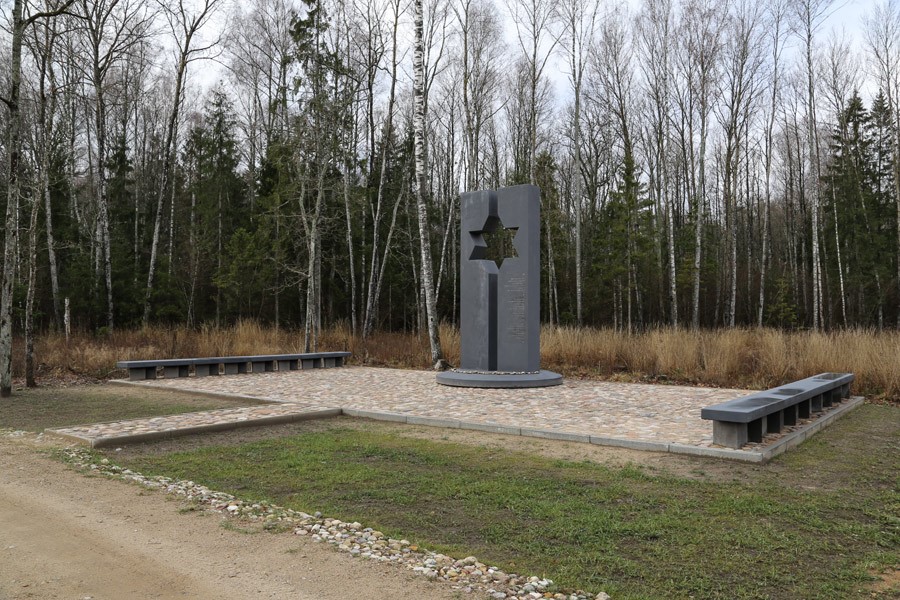Historical Context - Shadeve, Lithuania
 Seduva, Lithuania Location Seduva, Lithuania Location
Our Fuchs family history begins in Seduva, or in Yiddish Shadeve, a
small village or shtetl, situated in north central Lithuania.
Seduva was first mentioned in the fifteenth century documents.
According to some sources, the first Jewish families had established
themselves in the town about the same time as when Rabbi Mosheh
“HaGolah” was born there in 1449. |
The Shadeve Jewish population began to increase in the eighteen century,
after Shadeve acquired the status of a county administrative center and
became a commercial town under the Magdeburg Rights of self-rule.
In 1795, Lithuania was annexed by the Russian
Empire. By 1880, the Jewish population of Shadeve had increased to 2,386
out of a total population of 3,783. Jews worked in the small trades,
crafts and agriculture, while communal life centered on the synagogue, a
few small prayer houses, and the Yeshiva established by Rabbi Joseph
Leib Blokh. From 1880 to
1914, economic hardship, brutal Russian Army conscription, and endemic
government sanctioned Anti Semitism (May Laws) prompted a significant
Lithuanian Jewish emigration to South Africa,
America
and a few to Palestine.
During this pre WW1 era, period many of our Fuchs family emigrated to
the RSA (Republic of South Africa)
and the USA. |
Shadeve Jews were engaged in a wide range of numerous educations,
religious, cultural, and sports organizations, such as Tarbut, Tifereth
Bahurim, Maccabi, HeHaluz and many others. Four of the Fuchs daughters
were active in Zionist organizations.
The economic crisis of the 1930s forced new large scale Jewish
emigration from the Lithuanian provinces to the
USA,
South Africa,
and British Palestine. By 1935 the
remaining balance of the Fuchs family had left
Lithuania
for the RSA or Palestine.
The Lithuanian standard of living
dropped significantly in 1940 after annexation by the
Soviet Union. Under new repressive Soviet regulations,
Jewish youth organizations were disbanded, the Hebrew school was closed,
and the factories and shops owned by Jews were nationalized.
The German captured Shadeve on June 25, 1941 several days after invading Lithuania as part of the massive 1941 German
invasion of Russia.
By the beginning of July, Jews were forcibly moved into a guarded ghetto
made up of houses surrounded by barbed wire fence in the nearby village of Pavartyčiai.
On August 25, 1941, Shadeve Jewish history, which had lasted for
centuries, ended when the Nazis and local Lithuanian collaborators
murdered 664 Shadeve Jews in Liaudiškiai forest. (Source
Lostshtetl.com).
Approximately 95% of Lithuania's 265,000 Jews were
murdered,
the highest casualty rate of Jews in any nation in the
Holocaust. If
it wasn't for the tireless efforts and financial commitment of my great
uncle Saul Fuchs and other family, it is very likely that many Fuchs
family would have perished in the Shoah.
|
|
I
utilized a variety of resources to develop this overview. I'm especially
grateful to the following websites for incredibly valuable information
and photos regarding Shadeve and Lithuanian Jewish communities.
They include:
http://www.seligman.org.il/seduva_jews.html
www.lostshtetl.com
https://kehilalinks.jewishgen.org/Seduva/index.htm.
This
website shows the home of my great uncle Lebel Fuchs, the chazzan, at
#107. This site also has amazing personal stories and photos of town
life and its final days.
|

 Shadeve
Shadeve
 Shadeve town market 1930
Shadeve town market 1930
 Seduva Killing Site Memorial 2019
Seduva Killing Site Memorial 2019